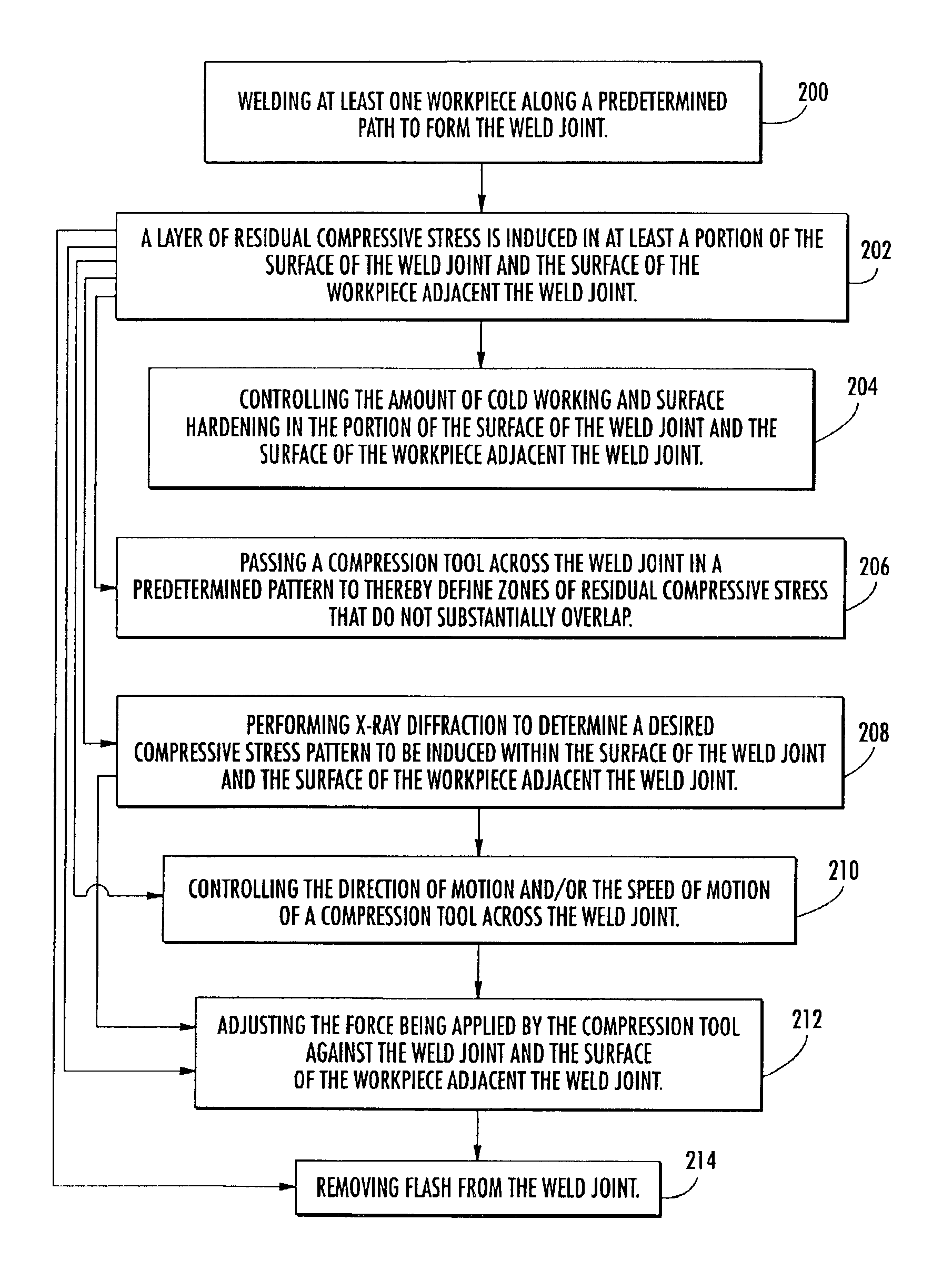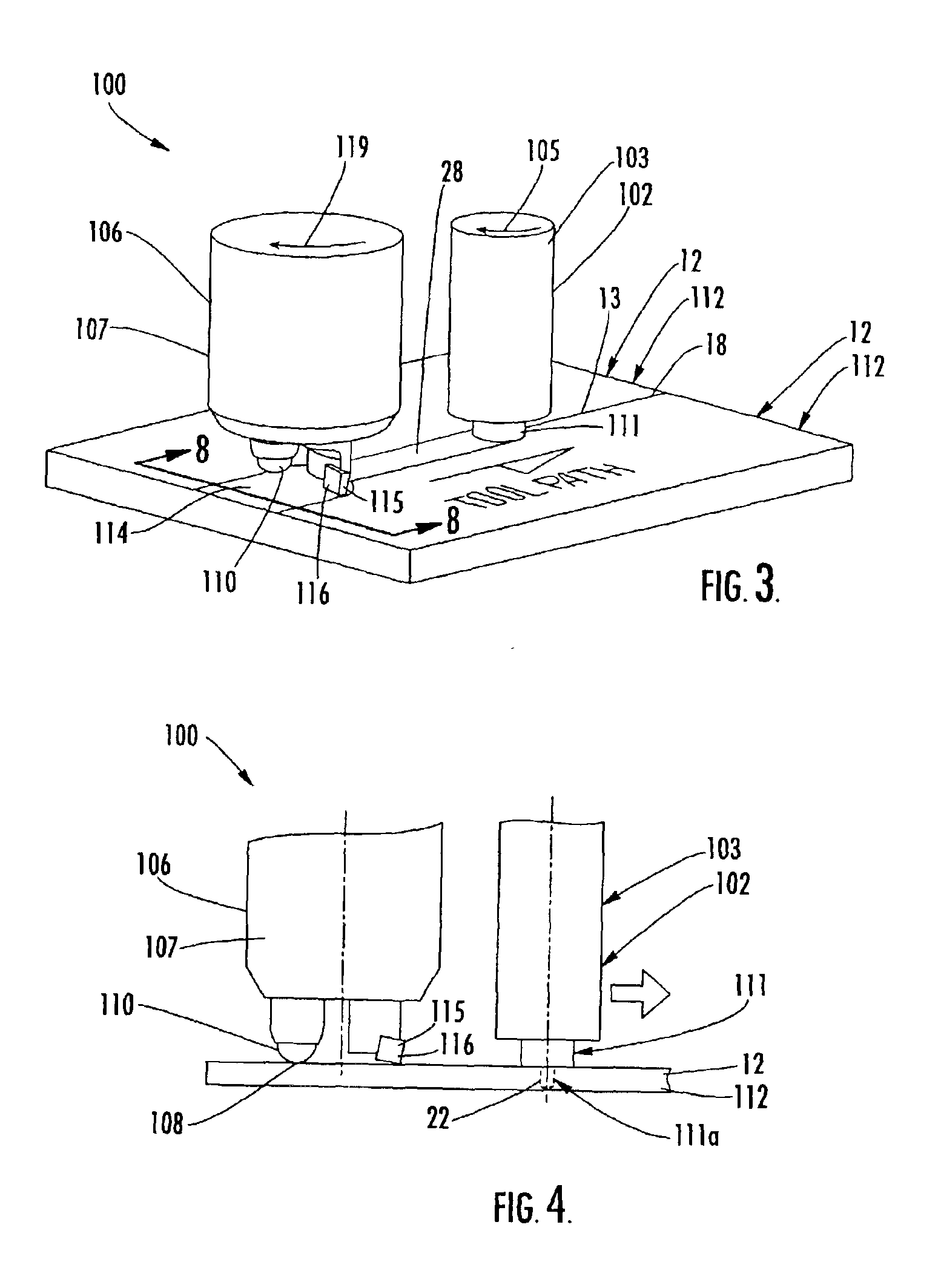Apparatus and method for forming weld joints having compressive residual stress patterns
a residual stress pattern and weld joint technology, applied in non-electric welding apparatus, welding/cutting auxillary devices, auxillary welding devices, etc., can solve the problems of limited welding application for certain manufacturing processes, degrading the material properties of materials, and increasing the corrosive attack of weld zones b>6/b>, so as to improve mechanical and chemical properties, improve yield strength, and improve material properties.
- Summary
- Abstract
- Description
- Claims
- Application Information
AI Technical Summary
Benefits of technology
Problems solved by technology
Method used
Image
Examples
Embodiment Construction
[0031]The present invention now will be described more fully hereinafter with reference to the accompanying drawings, in which some, but not all, embodiments of the invention are shown. This invention may be embodied in many different forms and should not be construed as limited to the embodiments set forth herein; rather, these embodiments are provided so that this disclosure will be thorough and complete, and will fully convey the scope of the invention to those skilled in the art. Like numbers refer to like elements throughout.
[0032]Referring to the drawings and, in particular to FIG. 8, there is illustrated a structural assembly 112, according to one embodiment of the present invention. The structural assembly 112 can be used in a variety of applications, including, but not limited to, automobiles, aerospace vehicles, construction applications, marine applications, and the like. The structural assembly 112 includes one or more workpieces 12 and at least one weld joint 28 dispose...
PUM
| Property | Measurement | Unit |
|---|---|---|
| depth | aaaaa | aaaaa |
| depth | aaaaa | aaaaa |
| grain sizes | aaaaa | aaaaa |
Abstract
Description
Claims
Application Information
 Login to View More
Login to View More - R&D
- Intellectual Property
- Life Sciences
- Materials
- Tech Scout
- Unparalleled Data Quality
- Higher Quality Content
- 60% Fewer Hallucinations
Browse by: Latest US Patents, China's latest patents, Technical Efficacy Thesaurus, Application Domain, Technology Topic, Popular Technical Reports.
© 2025 PatSnap. All rights reserved.Legal|Privacy policy|Modern Slavery Act Transparency Statement|Sitemap|About US| Contact US: help@patsnap.com



